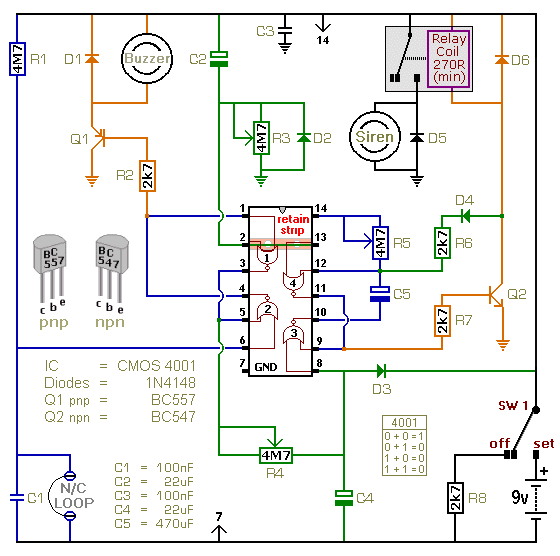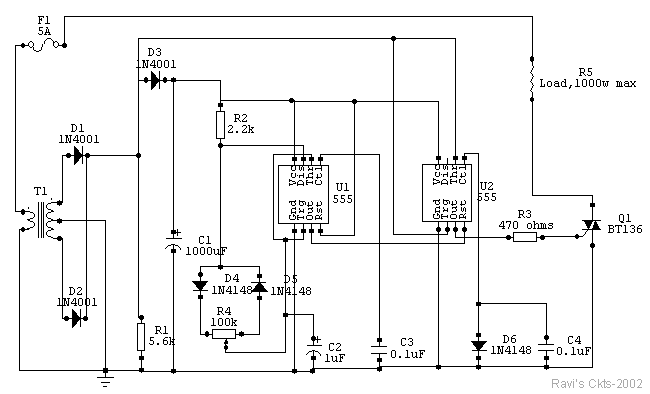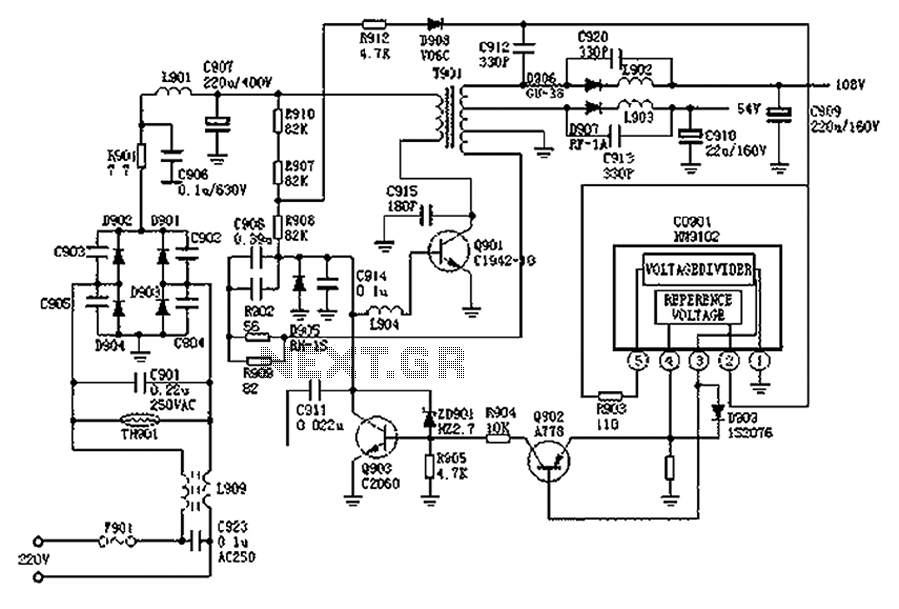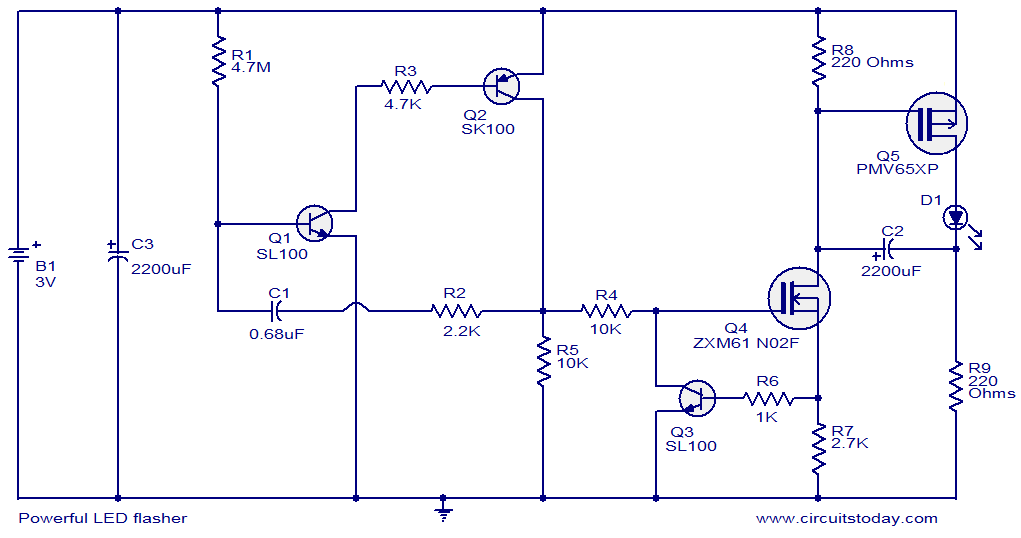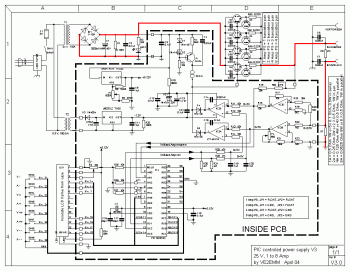
Photocell power supply (MAX630)
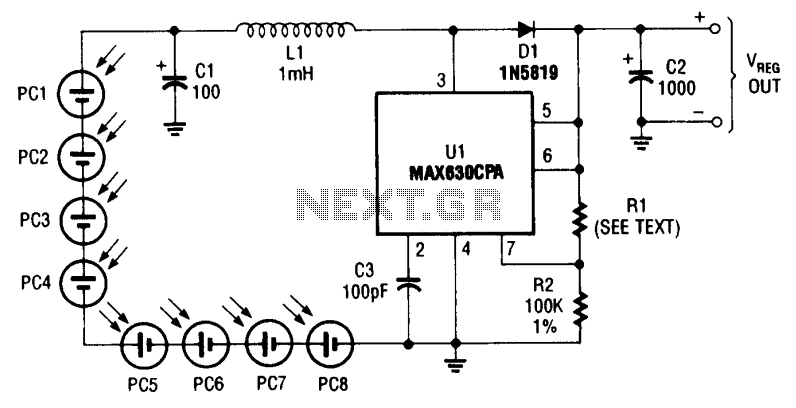
This circuit provides a regulated output of either 4.8 V or 7.2 V at a current of 15 mA, utilizing a 3 V input derived from a bank of photocells. Resistor R1 should be set to 453 kΩ for a 7.2 V output and 274 kΩ for a 4.8 V output. The efficiency of the regulator is approximately 70%. This aspect should be taken into account when choosing appropriate solar cells.
The circuit operates by converting the variable voltage from the photocells into a stable output voltage. The selection of R1 is critical, as it directly influences the output voltage based on the desired level. For the 7.2 V output, a higher resistance value (453 kΩ) is required, which limits the current flow and allows the circuit to maintain the higher voltage. Conversely, a lower resistance value (274 kΩ) is utilized for the 4.8 V output, permitting more current to flow and resulting in a lower voltage.
The efficiency of around 70% indicates that the circuit converts 70% of the input power into usable output power, with the remaining 30% lost as heat or in other forms of energy dissipation. This efficiency rating is an important parameter for applications powered by solar energy, as it directly affects the selection of solar cells. The solar cells must be capable of providing sufficient current and voltage to meet the circuit's requirements while accounting for the efficiency loss.
When designing this circuit, it is essential to consider the characteristics of the photocells, including their voltage output under varying light conditions and their ability to deliver the necessary current to sustain the desired output voltage. Proper thermal management may also be necessary to prevent overheating of components, which can affect performance and reliability. Overall, careful selection of components and design considerations will ensure optimal performance of the circuit in solar-powered applications.This circuit delivers either 4.8 or 7.2 V regulated at 15 mA with a 3-V input from a bank of photocells. R1 should be 453 k? for a 7.2-V output and 274 k? for a 4.8-Vdc output. Regulator efficiency is around 70%. This should be considered when selecting suitable solar cells.
The circuit operates by converting the variable voltage from the photocells into a stable output voltage. The selection of R1 is critical, as it directly influences the output voltage based on the desired level. For the 7.2 V output, a higher resistance value (453 kΩ) is required, which limits the current flow and allows the circuit to maintain the higher voltage. Conversely, a lower resistance value (274 kΩ) is utilized for the 4.8 V output, permitting more current to flow and resulting in a lower voltage.
The efficiency of around 70% indicates that the circuit converts 70% of the input power into usable output power, with the remaining 30% lost as heat or in other forms of energy dissipation. This efficiency rating is an important parameter for applications powered by solar energy, as it directly affects the selection of solar cells. The solar cells must be capable of providing sufficient current and voltage to meet the circuit's requirements while accounting for the efficiency loss.
When designing this circuit, it is essential to consider the characteristics of the photocells, including their voltage output under varying light conditions and their ability to deliver the necessary current to sustain the desired output voltage. Proper thermal management may also be necessary to prevent overheating of components, which can affect performance and reliability. Overall, careful selection of components and design considerations will ensure optimal performance of the circuit in solar-powered applications.This circuit delivers either 4.8 or 7.2 V regulated at 15 mA with a 3-V input from a bank of photocells. R1 should be 453 k? for a 7.2-V output and 274 k? for a 4.8-Vdc output. Regulator efficiency is around 70%. This should be considered when selecting suitable solar cells.
